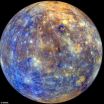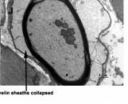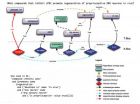(Press-News.org) CORVALLIS, Ore. – The world's oceans are vast and deep, yet rapidly advancing technology and the quest for extracting resources from previously unreachable depths is beginning to put the deep seas on the cusp of peril, an international team of scientists warned this week.
In an analysis in Biogeosciences, which is published by the European Geosciences Union, the researchers outline "services" or benefits provided by the deep ocean to society. Yet using these services, now and in the future, is likely to make a significant impact on that habitat and what it ultimately does for society, they point out in their analysis.
"The deep sea is the largest habitat on Earth, it is incredibly important to humans and it is facing a variety of stressors from increased human exploitation to impacts from climate change," said Andrew Thurber, an Oregon State University marine scientist and lead author on the study. "As we embark upon greater exploitation of this vast environment and start thinking about conserving its resources, it is imperative to know what this habitat already does for us."
"Our analysis is an effort to begin to summarize what the deep sea provides to humans because we take it for granted or simply do not know that the deep sea does anything to shape our daily lives," he added. "The truth is that the deep sea affects us, whether we live on the coast or far from the ocean – and its impact on the globe is pervasive."
The deep sea is important to many critical processes that affect the Earth's climate, including acting as a "sink" for greenhouse gases – helping offset the growing amounts of carbon dioxide emitted into the atmosphere. It also regenerates nutrients through upwelling that fuel the marine food web in productive coastal systems such as the Pacific Northwest of the United States, Chile and others. Increasingly, fishing and mining industries are going deeper and deeper into the oceans to extract natural resources.
"One concern is that many of these areas are in international waters and outside of any national jurisdiction," noted Thurber, an assistant professor (senior research) in Oregon State's College of Earth, Ocean, and Atmospheric Sciences. "Yet the impacts are global, so we need a global effort to begin protecting and managing these key, albeit vast, habitats."
Fishing is an obvious concern, the scientists say. Advances in technology have enabled commercial fisheries to harvest fish at increasing depths – an average of 62.5 meters deeper every decade, according to fisheries scientists. This raises a variety of potential issues.
"The ability to fish deeper is shifting some fisheries to deeper stocks, and opening up harvests of new species," Thurber said. "In some local cases, individual fisheries are managed aggressively, but due to how slow the majority of the fish grow in the deep, some fish populations are still in decline – even with the best management practices."
The orange roughy off New Zealand, for instance, is both a model of effective and conservation-based management, yet its populations continue to decline, though at a slower rate than they would have experienced without careful management, Thurber noted.
"We also have to be concerned about pollution that makes its way from our continental shelves into the deep sea," he added. "Before it was 'out of sight, out of mind.' However, some of the pollution can either make it into the fish that we harvest, or harm the fishers that collect the fish for us. It is one of the reasons need to identify how uses of the deep sea in the short term can have long-term consequences. Few things happen fast down there."
Mining is a major threat to the deep sea, the researchers point out in their analysis. In particular, the quest for rare earth and metal resources, which began decades ago, has skyrocketed in recent years because of their increased use in electronics, and because of dwindling or limited distribution of supplies on land. Mining the deep ocean for manganese nodules, for example – which are rich in nickel – requires machines that may directly impact large swaths of the seafloor and send up a sediment plume that could potentially affect an even larger area, the scientists note.
These mining resources are not limited to muddy habitats, Thurber pointed out. Massive sulfides present at hydrothermal vents are another resource targeted by mining interests.
"The deep sea has been an active area for oil and gas harvesting for many years," he said, "yet large reservoirs of methane and other potential energy sources remain unexploited. In addition to new energy sources, the potential for novel pharmaceuticals is also vast.
"There are additional threats to these unique habitats, including ocean acidification, warming temperatures and possible changes to ocean circulation through climate change."
The next step, the researchers say, is to attach an economic value to both the services provided by the deep sea – and the activities that may threaten those services.
"What became clear as we put together this synopsis is that there is vast potential for future resources but we already benefit greatly through this environment," Thurber said. ""What this means is that while the choices to harvest or mine will be decided over the coming decades, it is important to note that the stakeholders of this environment represent the entire world's population."
"The Bible, the Koran, the Torah, and early Greek texts all reference the deep sea," he added. "Maybe it's time for all of us to take a closer look at what it it has to offer and decide if and how we protect it."
INFORMATION:
Scientists caution against exploitation of deep ocean
2014-07-30
ELSE PRESS RELEASES FROM THIS DATE:
Ablation increases survival for adults with atrial fibrillation
2014-07-30
Ann Arbor, Mich. -- Adults who undergo a minimally invasive technique to treat atrial fibrillation are significantly less likely to die from a heart attack or heart failure, according to a long-term study by the University of Michigan Frankel Cardiovascular Center.
More than 4 million people have atrial fibrillation, an age-related heart rhythm disorder that can cause a fluttering sensation in the chest and impair the heart's ability to pump blood.
The study published in Heart Rhythm shows cardiovascular mortality dropped by 60 percent among adults who had their normal ...
Mercury's magnetic field tells scientists how its interior is different from Earth's
2014-07-30
Earth and Mercury are both rocky planets with iron cores, but Mercury's interior differs from Earth's in a way that explains why the planet has such a bizarre magnetic field, UCLA planetary physicists and colleagues report.
Measurements from NASA's Messenger spacecraft have revealed that Mercury's magnetic field is approximately three times stronger at its northern hemisphere than its southern one. In the current research, scientists led by Hao Cao, a UCLA postdoctoral scholar working in the laboratory of Christopher T. Russell, created a model to show how the dynamics ...
Differential gene expression in proximal and distal nerve segments after sciatic nerve injury
2014-07-30
Wallerian degeneration is a subject of major interest in neuroscience. A large number of genes are differentially regulated during the distinct stages of Wallerian degeneration: transcription factor activation, immune response, myelin cell differentiation and dedifferentiation. Although gene expression responses in the distal segment of the sciatic nerve after peripheral nerve injury are known, differences in gene expression between the proximal and distal segments remain unclear. Dr. Dengbing Yao and co-workers from Nantong University, China used microarrays to analyze ...
Implanting 125I seeds into rat DRG for neuropathic pain: Only neuronal microdamage occurs
2014-07-30
The use of iodine-125 (125I) in cancer treatment has been shown to relieve patients' pain. Considering dorsal root ganglia are critical for neural transmission between the peripheral and central nervous systems, Dr. Tengda Zhang and colleagues from Institute of Radiation Medicine, Chinese Academy of Medical Sciences, China assumed that 125I could be implanted into rat dorsal root ganglia (DRG) to provide relief for neuropathic pain. 125I seeds with different radioactivity (0, 14.8, 29.6 MBq) were implanted separately into the vicinity of the L5 DRG. Experimental results ...
Facilitating transparency in spinal cord injury studies using recognized information standards
2014-07-30
Progress in developing robust therapies for spinal cord injury (SCI), traumatic brain injury (TBI) and peripheral nerve injury has been slow. A great deal has been learned over the past 30 years regarding both the intrinsic factors and the environmental factors that regulate axon growth, but this large body of information has not yet resulted in clinically available therapeutics. Prof. Lemmon and his team from University of Miami in USA proposed this therapeutic bottleneck has many root causes, but a consensus is emerging that one contributing factor is a lack of standards ...
Dyscalculia: Burdened by blunders with numbers
2014-07-30
Between 3 and 6% of schoolchildren suffer from an arithmetic-related learning disability. Researchers at Ludwig-Maximilians-Universitaet (LMU) in Munich now show that these children are also more likely to exhibit deficits in reading and spelling than had been previously suspected.
Addition and subtraction, multiplication and division are the four basic operations in arithmetic. But for some children, learning these fundamental skills is particularly challenging. Studies show that they have problems grasping the concepts of number, magnitude, and quantity, and that they ...
Older adults are at risk of financial abuse
2014-07-30
Nearly one in every twenty elderly American adults is being financially exploited – often by their own family members. This burgeoning public health crisis especially affects poor and black people. It merits the scrutiny of clinicians, policy makers, researchers, and any citizen who cares about the dignity and well-being of older Americans, says Dr. Janey Peterson of Weill Cornell Medical College in the US. She led one of the largest American studies¹ ever on elder abuse, the findings of which appear in the Journal of General Internal Medicine², published by Springer.
With ...
Sugar mimics guide stem cells toward neural fate
2014-07-30
Embryonic stem cells can develop into a multitude of cells types. Researchers would like to understand how to channel that development into the specific types of mature cells that make up the organs and other structures of living organisms.
One key seems to be long chains of sugars that dangle from proteins on surfaces of cells.
Kamil Godula's group at the University of California, San Diego, has created synthetic molecules that can stand in for the natural sugars, but can be more easily manipulated to direct the process, they report in the Journal of the American ...
Peru's carbon quantified: Economic and conservation boon
2014-07-30
Washington, DC—Today scientists unveiled the first high-resolution map of the carbon stocks stored on land throughout the entire country of Perú. The new and improved methodology used to make the map marks a sea change for future market-based carbon economies. The new carbon map also reveals Perú's extremely high ecological diversity and it provides the critical input to studies of deforestation and forest degradation for conservation, land use, and enforcement purposes. The technique includes the determination of uncertainty of carbon stores throughout the country, which ...
New catalyst converts carbon dioxide to fuel
2014-07-30
Scientists from the University of Illinois at Chicago have synthesized a catalyst that improves their system for converting waste carbon dioxide into syngas, a precursor of gasoline and other energy-rich products, bringing the process closer to commercial viability.
Amin Salehi-Khojin, UIC professor of mechanical and industrial engineering, and his coworkers developed a unique two-step catalytic process that uses molybdenum disulfide and an ionic liquid to "reduce," or transfer electrons, to carbon dioxide in a chemical reaction. The new catalyst improves efficiency and ...




